BIRD DRAWING
And its importance in Ornithology
Article by Alpha Del Bosque
Illustration by Elizabeth Gould
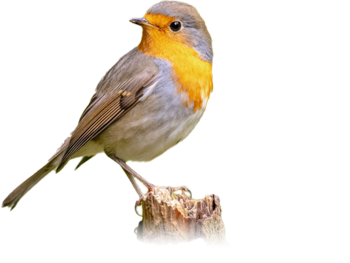
Bird drawing CHAPTER 1
Introduction
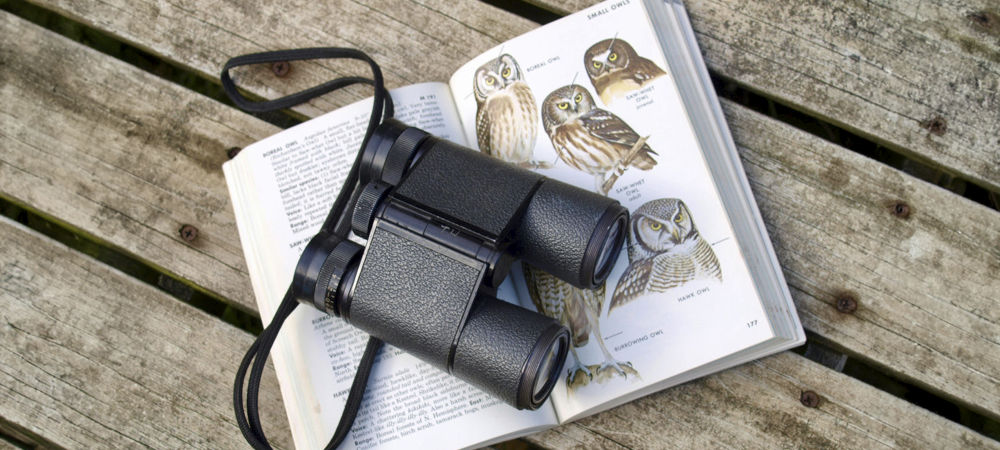
The Intersection of Art and Science
Bird drawing in scientific illustration is where art meets science in a beautiful and impactful way. At first glance, it may seem like a niche hobby, but it is a critical tool in the field of ornithology.
The accuracy and detail of these illustrations are essential for identifying species, studying their behaviors, and understanding their habitats. Imagine being able to capture the intricate patterns of a bird's plumage or the unique shape of its beak, all while contributing valuable information to the scientific community.
Importance of Scientific Illustration in Ornithology
Scientific illustration, especially bird drawing, plays a pivotal role in ornithology for several reasons:
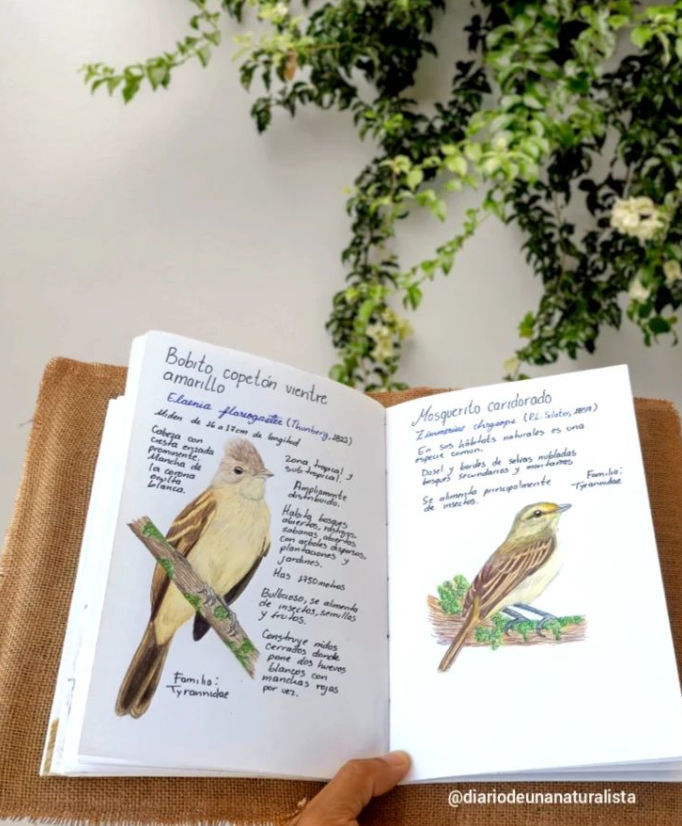
Artist: Damaris Rojas
1. Identification and Classification: Illustrations help in the accurate identification and classification of bird species.
Unlike photographs, which can be affected by lighting and perspective, illustrations can highlight key features that distinguish one species from another.
Example: The subtle differences in the head of two similar species can be clearly depicted in illustrations, making it easier for ornithologists to differentiate between them.
2. Behavioral Studies: Illustrations can depict birds in various poses and activities, such as feeding, nesting, or flying, providing insights into their behavior.
Example: An illustration showing the nesting behavior of a tree swallow can reveal details about its environment and how it interacts with its surroundings.
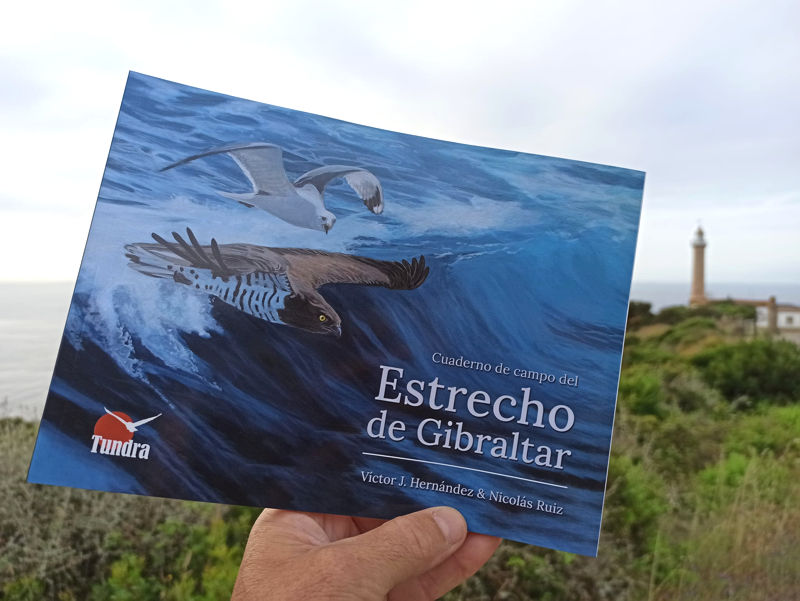
Artist: Nicolás Ruíz
3. Educational Tools: Bird illustrations are vital for educational purposes.
They are used in textbooks, field guides, and research papers to teach students, birdwatchers, and researchers about different species and their characteristics.
Example: Field guides with detailed illustrations help birdwatchers identify species in their natural habitats, enhancing their bird watching experience.
4. Conservation Efforts: Illustrations raise awareness about endangered species and the need for conservation. They can evoke an emotional response, motivating people to support conservation initiatives.
Example: Illustrations of critically endangered species like the Philippine Eagle highlight their beauty and the urgency of conservation efforts.

Science Fact:
Feathers are unique to birds. They are the only living creatures with feathers, which evolved from reptilian scales.
History of Bird Illustration
The history of bird illustration is rich and fascinating, with contributions from many renowned artists and naturalists over the centuries.
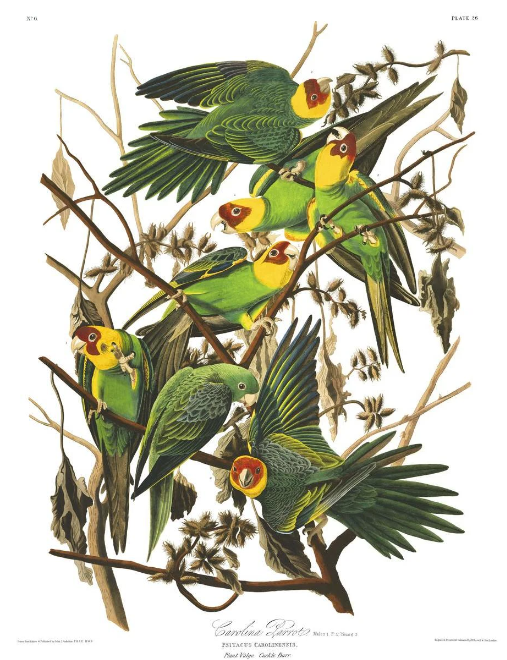
Borrowed from National Audubon Society
1. Early Beginnings: Bird illustration dates back to ancient civilizations where birds were often depicted in art and manuscripts.
However, it wasn't until the Renaissance that scientific illustration began to take a more accurate and detailed form.
2. John James Audubon: One of the most famous bird illustrators, Audubon’s work in the early 19th century set new standards for accuracy and artistry.
His book "The Birds of America" is still celebrated for its detailed and lifelike depictions of North American birds.
Example: Audubon’s illustration of the Carolina Parakeet, now extinct, serves as a historical record of the species' existence and beauty.
3. Elizabeth Gould: She made significant contributions to bird illustration in the 19th century. Working alongside her husband, ornithologist John Gould, Elizabeth created hundreds of detailed and accurate illustrations of birds from around the world.
Elizabeth drew Charles Darwin’s finches from the HMS Beagle voyage, but her husband took credit for her work.
Today she is finally acknowledged for her exceptional work and her profound impact on ornithology and natural science.
Example: Elizabeth’s illustrations for "The Birds of Australia" are particularly noteworthy. Despite limited recognition during her lifetime, her work is now celebrated for its beauty and scientific precision.
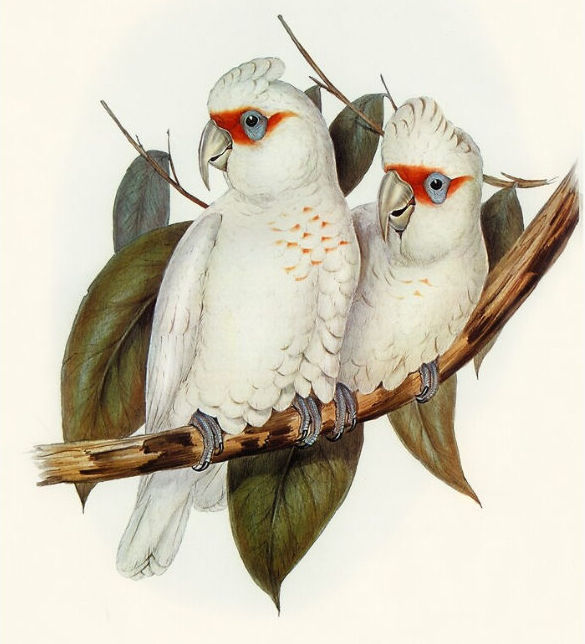
Artist: Elizabeth Gould
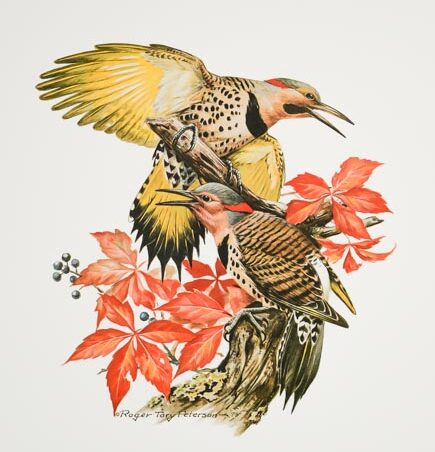
Artist: Roger Tory Peterson
4. Roger Tory Peterson: In the 20th century, Peterson revolutionized birdwatching with his field guides.
His clear, detailed illustrations made bird identification accessible to amateurs and professionals alike.
Example: Peterson’s guides included visual keys highlighting distinguishing features, such as the unique markings on a Northern Flicker's wings.
5. Contemporary Illustrators: Today, many talented illustrators continue to advance the field, combining traditional techniques with digital tools. Their work supports modern ornithological research and conservation efforts.
Example: Liz Clayton Fuller, an accomplished scientific illustrator and fine artist from Nashville, Tennessee, exemplifies this blend, creating detailed and inspiring works that support modern ornithological research and conservation efforts.
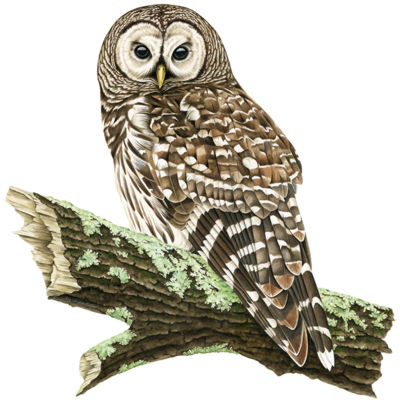
Artist: Liz Clayton Fuller
CHAPTER 2
The Role of Bird Illustrators
Bridging the Gap Between Ornithology and Public
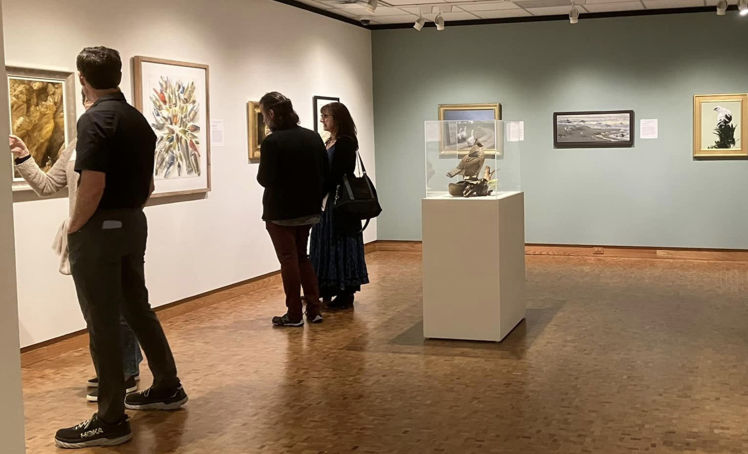
Artist Elwin van der Kolk exposition at Leigh Yawkey Woodson Art Museum
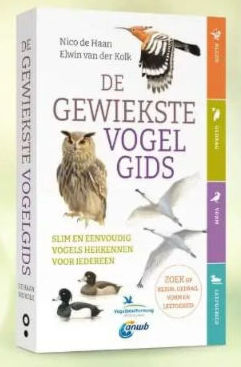
Elwin van der Kolk guide.
Bird illustrators play a crucial role in making scientific information accessible to a broader audience. Their work translates complex ornithological data into visually appealing and easy-to-understand illustrations. This accessibility helps spark curiosity and appreciation for bird species among the public.
For example, a beautifully illustrated field guide can turn a casual birdwatcher into a passionate ornithologist. The visual appeal of these illustrations often draws people in, encouraging them to learn more about bird species, their behaviors, and their habitats.
By making scientific information more engaging, bird illustrators help foster a deeper connection between people and the natural world, promoting conservation efforts and a greater appreciation for biodiversity.
Collaborations with Ornithologists
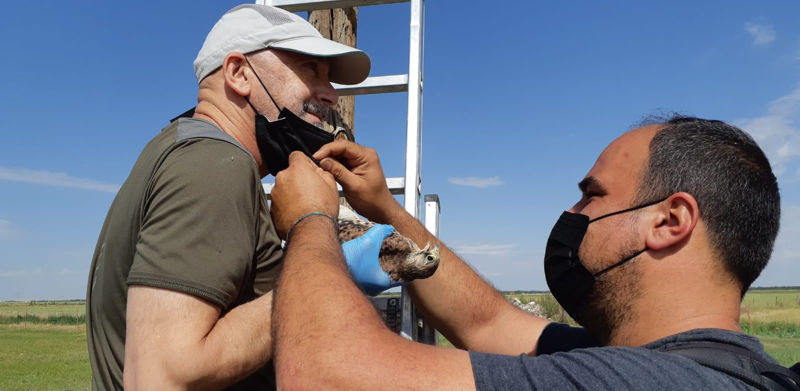
Bird Illustrator Nacho Sevilla in El Oso, Castilla y León, Spain.
Bird illustrators frequently collaborate with ornithologists to ensure the accuracy and relevance of their work. These partnerships are mutually beneficial, combining the artist’s skill in visual representation with the scientist’s expertise in bird biology.
🔆Working with Bird Experts: Illustrators often work closely with ornithologists to depict new species, document unique behaviors, or illustrate scientific findings. This collaboration ensures that the illustrations are not only artistically beautiful but also scientifically accurate.
Example: When illustrating a new bird species discovered in a remote rainforest, an artist might rely on detailed descriptions and photographs provided by the ornithologist who made the discovery.
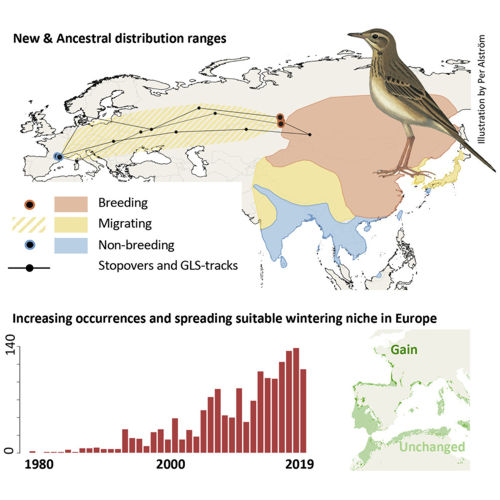
Illustration by Per Johan Alström
🔆Contributing to Research and Education: Bird illustrators contribute significantly to research projects and educational materials.
Their work is used in scientific journals, textbooks, and public exhibits, helping to educate both the scientific community and the general public.
Example: An illustrator might create detailed drawings for a scientific paper on bird migration patterns, helping to visualize the data and making the findings more comprehensible.

Science Fact:
Birds have hollow bones. This adaptation reduces body weight, making flight more efficient.
CHAPTER 3
Scientific Foundations of Bird Illustration
Anatomical Studies
Understanding bird anatomy is fundamental to creating accurate and detailed illustrations. Bird illustrators study the skeletal and muscular structures of birds to ensure that their depictions are anatomically correct. Knowing the structure and function of different parts of a bird's body helps to capture their unique characteristics and bring the illustrations to life.
Skull: The bird's skull is lightweight yet sturdy, protecting the brain and housing the beak. The beak's shape varies greatly among species, adapted to their feeding habits.
Vertebral Column: Birds have a flexible neck with numerous vertebrae, allowing a wide range of motion. The rest of the vertebral column is more rigid to support flight muscles.
Rib Cage: The rib cage is designed to protect internal organs and support the muscles used in respiration. Birds also have a unique structure called the keel on their sternum, which provides an anchor for powerful flight muscles.

Scientific Illustrator Juan Carlos Gálvez sketches
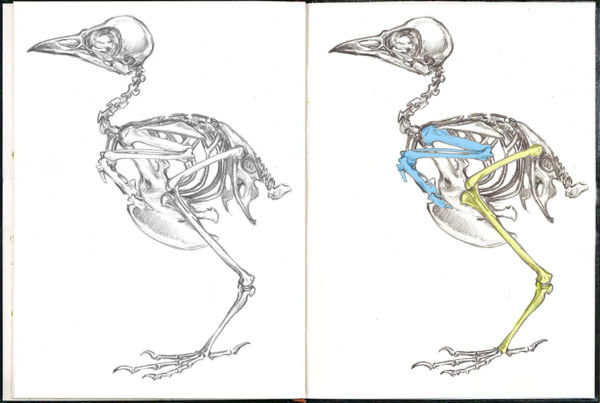
Scientific Illustrator Juan Carlos Gálvez sketches
Wings: The wing bones correspond to human arm bones but are modified for flight.
They include the humerus, radius, and ulna, with the hand bones fused to form a rigid support for flight feathers.
Legs and Feet: Birds have lightweight but strong leg bones. Their feet are adapted to their environment and lifestyle, with variations in toe arrangements and claw shapes.
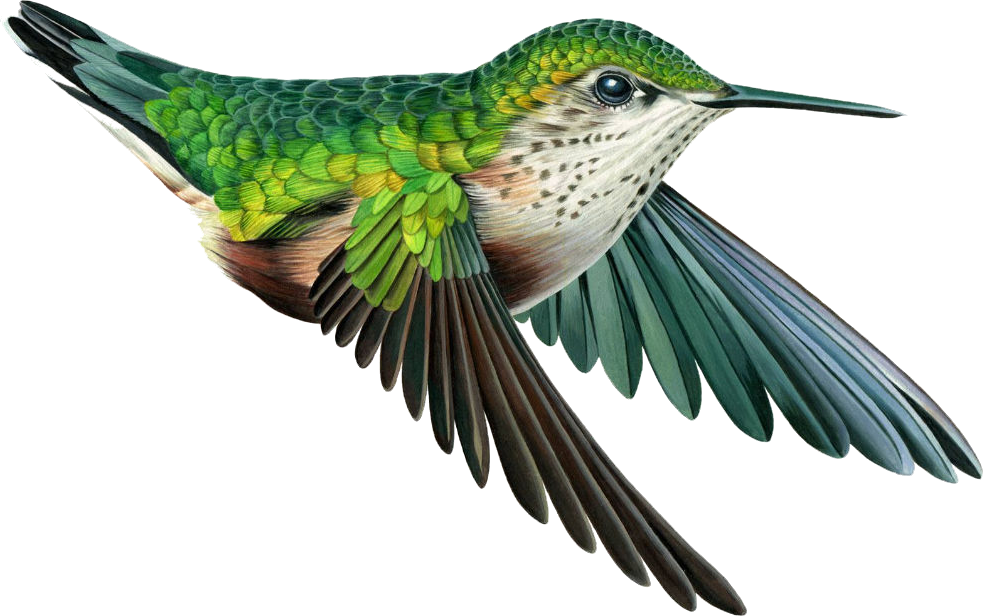
Artist: Liz Clayton Fuller
Feather Types and Functions
Feathers are one of the most distinctive features of birds, serving various purposes from flight to insulation and display. Understanding the different types of feathers and their functions is vital for accurate bird illustration.
Primary Feathers: These are the main flight feathers attached to the bird's hand bones. They are long, strong, and asymmetrical, providing lift and propulsion during flight.
Secondary Feathers: These feathers are attached to the ulna in the bird's wing. They help in providing lift and are usually more symmetrical than primary feathers.
Tertiary Feathers: Found closer to the bird's body, these feathers are attached to the humerus. They help in smooth airflow over the wings and provide additional lift.
Feather patterns and colors
Feather patterns and colors play crucial roles in bird identification, camouflage, mating displays, and communication.
Camouflage: Many birds have feather patterns and colors that help them blend into their environment, protecting them from predators.
Mating Displays: Brightly colored feathers and intricate patterns are often used to attract mates.
Species Identification: Unique feather patterns and colors are key to distinguishing different bird species.
Understanding bird anatomy, from the skeletal structure and muscles to the various types and functions of feathers, is essential for creating scientifically accurate and visually stunning bird illustrations.
This foundational knowledge helps to capture the essence of each bird species.
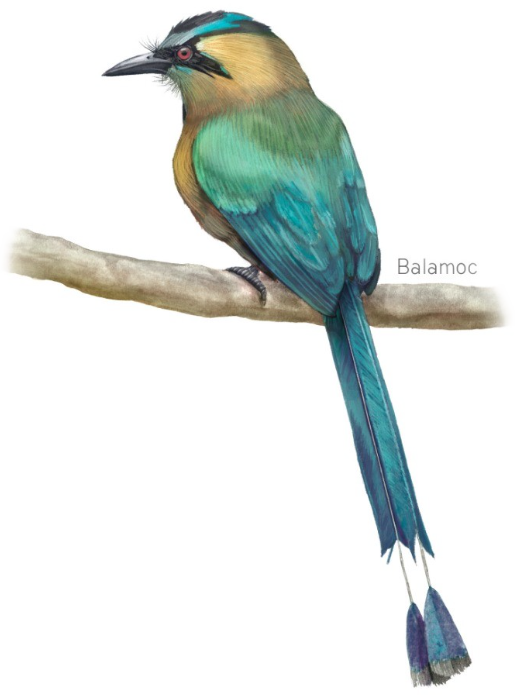
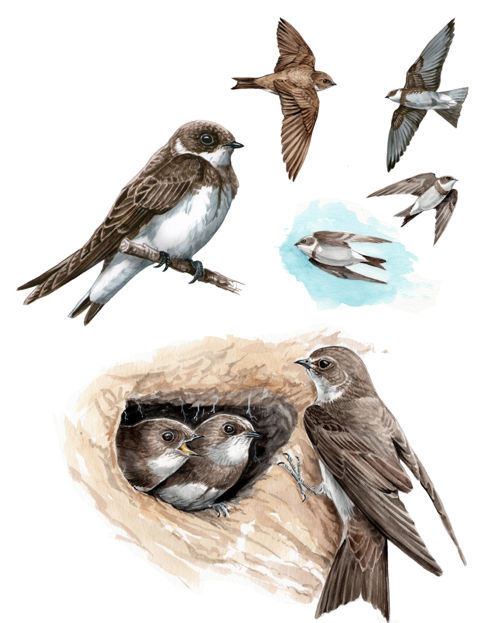
Scientific Illustrator: Nacho Sevilla
Behavioral Observations
Capturing bird behaviors in illustrations adds depth and context to the artwork. Bird illustrators spend time observing birds in their natural habitats, noting behaviors such as feeding, mating, and nesting.
Studying Birds in Their Natural Habitats: Field observations provide valuable insights into how birds interact with their environment. These observations help illustrators depict behaviors accurately, adding a dynamic element to their work.
Example: An illustration showing the nesting behavior of some species can reveal details about its environment and how it interacts with its surroundings.

Science Fact:
Birds are descendants of dinosaurs. Modern birds evolved from theropod dinosaurs around 150 million years ago.
Photographic and Field References
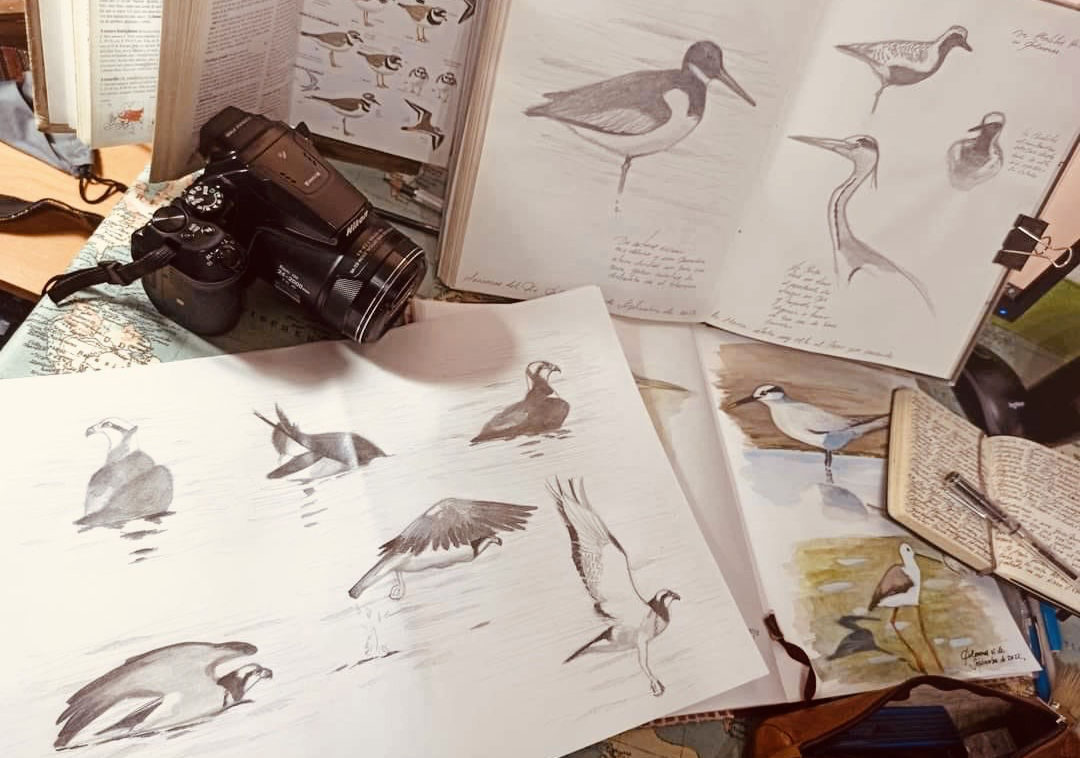
Scientific Illustrator Nicolás Ruíz Desk
Using photographs and field sketches as references ensures the accuracy and detail of bird illustrations. These references provide a visual guide that helps illustrators capture specific features and behaviors.
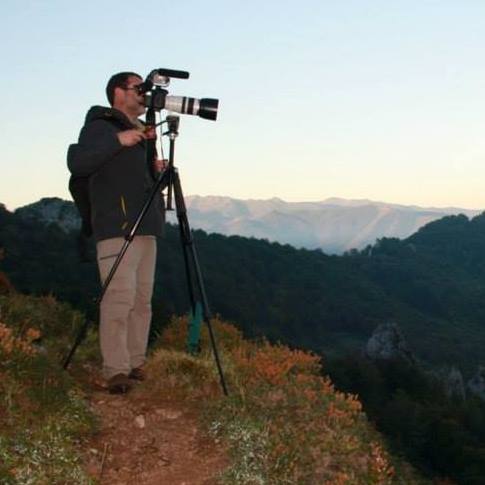
Naturalist illustrator Jorge López
Using Photographs for Accurate Depiction: High-quality photographs of birds serve as a vital reference for illustrators. These images capture details that might be missed in quick field sketches.
Example: A close-up photograph of a bird’s eye can help an illustrator accurately depict the color and shape of the iris and pupil.
Field Sketching Techniques: Field sketching allows illustrators to capture birds in their natural settings. These sketches provide a foundation for more detailed illustrations created in the studio.
Example: Quick sketches of birds observed in a marshland can be refined and detailed later, incorporating the natural environment and behavior observed in the field.
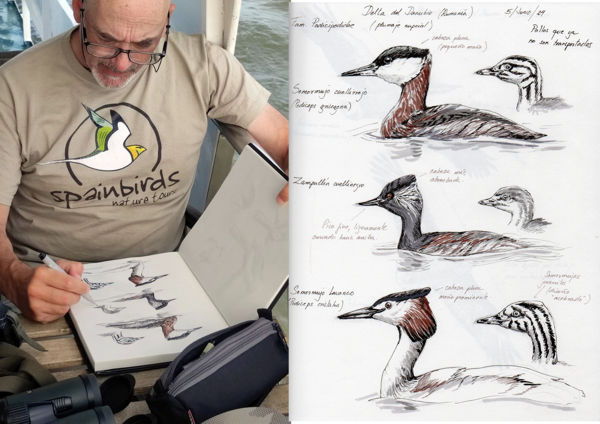
Scientific illustrator Nacho Sevilla

Naturalist illustrator Jorge López
In conclusion, the intersection of art and science in bird illustration is a rich and dynamic field. By combining artistic skill with scientific knowledge, bird illustrators create works that are both beautiful and informative, bridging the gap between ornithology and public engagement.
Through their detailed and accurate illustrations, they contribute significantly to research, education, and conservation efforts, inspiring a greater appreciation for the avian world.
CHAPTER 4
Tools and Materials for Bird Illustration
Sketching
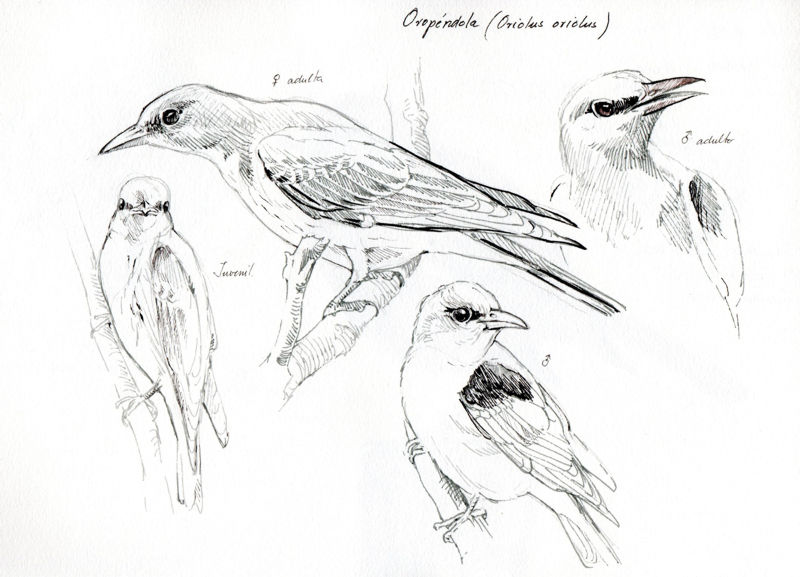
Nacho Sevilla Sketch
Sketching is the foundational step in bird illustration. The choice of pencils and inks can significantly impact the quality and detail of your sketches.
Pencils: High-quality graphite pencils are essential for capturing the fine details of bird anatomy. A range of hardness (from 2H to 6B) allows for both precise lines and softer shading.
Example: Using a 2H pencil for initial outlines ensures light, erasable lines, while a 6B pencil can add depth and shadows to the sketch.
Inks: Fine-tipped pens and archival inks are used to add permanent details and contrasts to sketches. Inks provide a sharpness and clarity that pencils alone cannot achieve.
Example: A 0.3 mm fineliner can be used for intricate feather details, while a brush pen might be ideal for bold, dynamic lines.
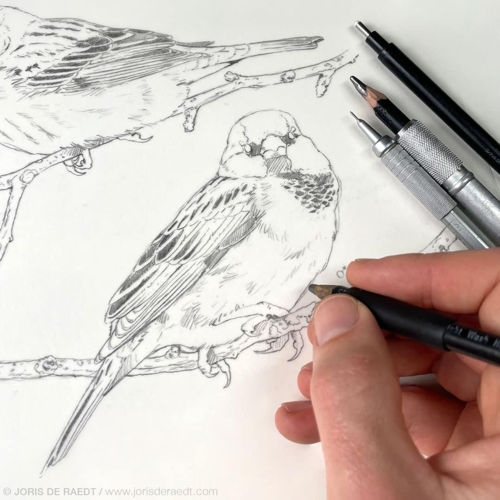
Scientific Illustrator Joris De Raedt
Papers and Sketchbooks
The right paper or sketchbook is crucial for producing high-quality sketches.
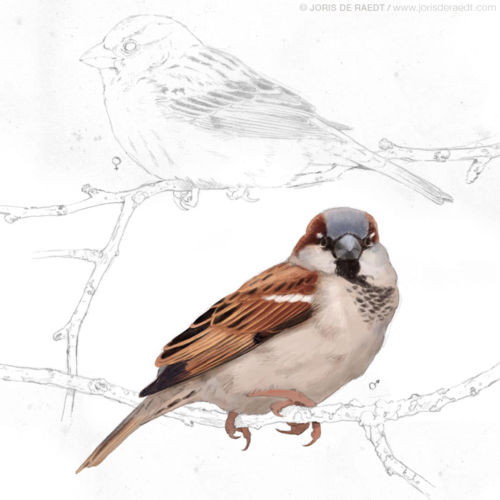
Scientific Illustrator Joris De Raedt
Papers: Smooth, high-density paper is ideal for detailed pencil and ink work. It should be able to handle multiple layers of graphite and ink without smudging or bleeding.
Example: Bristol board is a popular choice among illustrators for its smooth surface and durability.
Sketchbooks: Portable and durable sketchbooks are perfect for fieldwork. They should have high-quality paper that can withstand erasing and reworking.
Example: A hardbound sketchbook with acid-free paper ensures that your field sketches remain intact and do not degrade over time.
Watercolor Technique
Why is Watercolor a Very Important Technique in Bird Art?
Watercolor is a favored medium among bird illustrators due to its versatility and ability to capture the delicate and vibrant colors of birds.
It allows for subtle gradations and transparency that are perfect for rendering feathers and natural settings.
Technique Description
Watercolor painting involves applying water-soluble pigments to paper. The level of water used can vary the intensity and texture of the colors, allowing for both bold and soft effects.
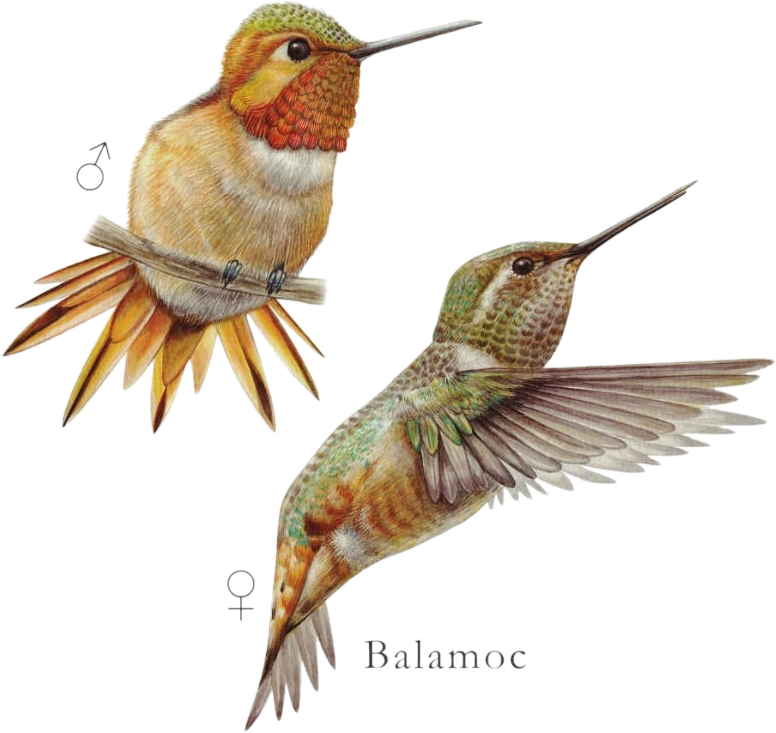
Scientific Illustrator Balamoc illustration
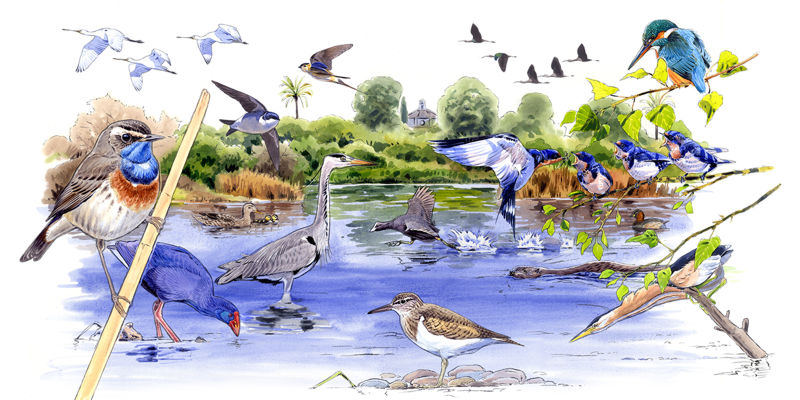
Illustrator, naturalist painter and biologist Francisco José Hernández Fernández www.avestrazos.com
Example: Light washes can be used to depict the soft, fluffy appearance of a bird's underbelly, while more concentrated pigment can capture the vivid hues of a bird’s plumage.
Paints
Quality watercolors come in tubes or pans, and choosing the right type depends on personal preference and the specific needs of your project.
Example: Professional-grade watercolor paints, such as those from Winsor & Newton or Daniel Smith, offer superior pigmentation and blending capabilities.
Brushes
The choice of brushes is critical in watercolor painting. They should hold water well and have a fine tip for detailed work.
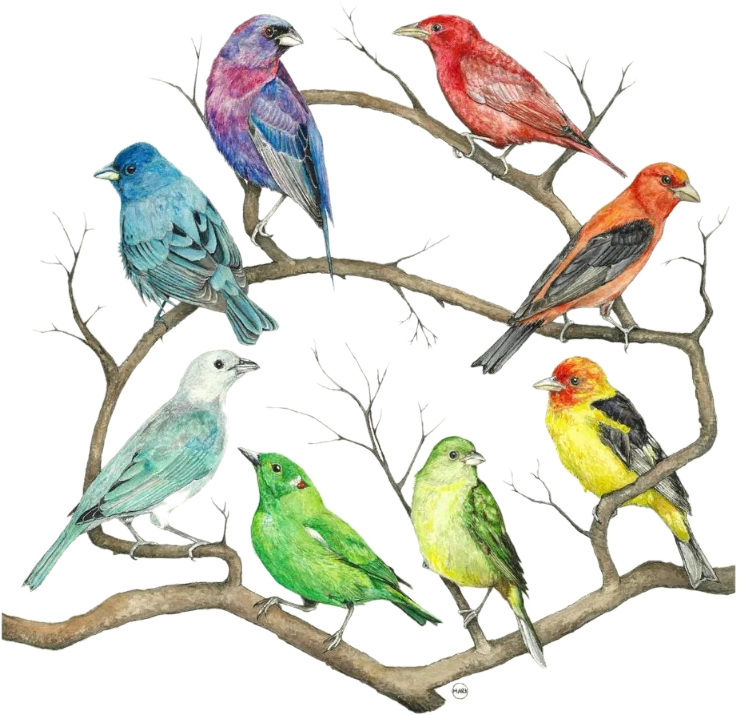
Naturalist artist Odessa Mark
Example: Sable brushes, such as those from the Raphael or Kolinsky brands, are highly regarded for their ability to hold a fine point and their excellent water retention.
Papers
Watercolor paper must be able to absorb water without warping or deteriorating. It comes in different weights and textures.
Example: Cold-pressed watercolor paper (140 lb) is a versatile choice that provides a good balance of texture and smoothness, making it suitable for detailed bird illustrations.
Oil Technique
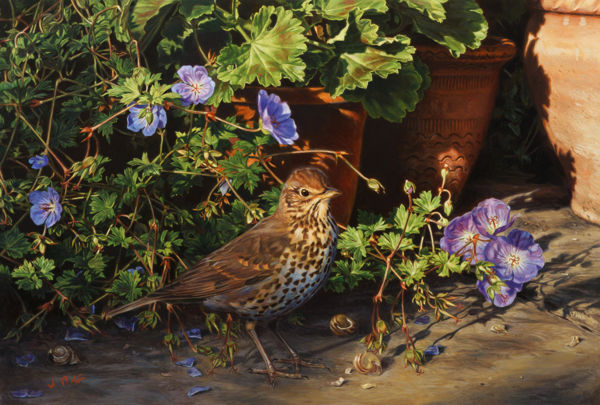
Garden thrush - Jonathan Pointer (Turdus philomelos)
Why is Oil a Very Important Technique in Bird Art?
Oil painting offers rich colors, depth, and longevity, making it a significant medium for bird art. The slow drying time allows for detailed blending and layering, essential for capturing the intricate details of bird anatomy and plumage.
Technique Description
Oil painting involves using pigments suspended in oil, typically linseed oil.
This medium allows for extensive blending and layering, which can create realistic textures and detailed features.
Example: The technique of glazing, where thin layers of translucent paint are applied over dried layers, can create a luminous effect that mimics the sheen of bird feathers.
Paints
High-quality oil paints are essential for achieving the best results. They come in a variety of brands and formulations, each offering different characteristics.
Example: Brands like Winsor & Newton or Gamblin offer a range of colors with excellent pigmentation and consistency.
Brushes
Oil painting brushes need to be sturdy and resilient to handle the thicker medium. They come in various shapes and sizes, each serving a different purpose.
Example: Hog bristle brushes are commonly used for their durability and ability to hold large amounts of paint, while finer synthetic brushes can be used for detail work.
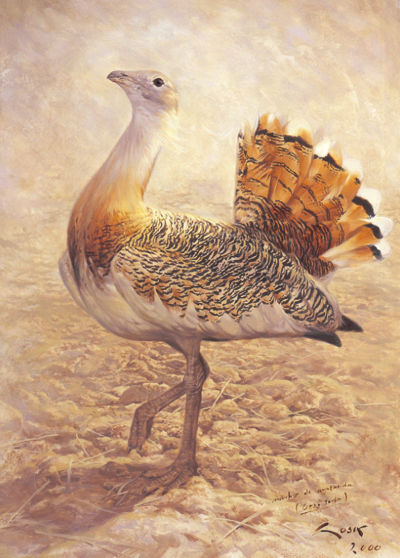
Otis tarda from Artist Manuel Sosa
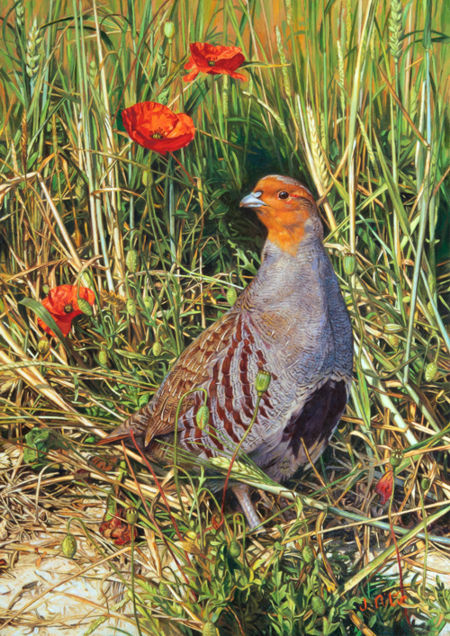
Harvest Partridge - Jonathan Pointer (perdix perdix)
Papers
While canvas is the traditional surface for oil painting, high-quality oil paper is also available for those who prefer a different texture or more portable option.
Example: Arches Oil Paper is designed specifically for oil painting and offers a convenient, portable alternative to canvas.
By understanding and selecting the right tools and materials for bird illustration, artists can ensure their work is both beautiful and scientifically accurate.
Each medium, whether sketching, watercolor, or oils, offers unique advantages that can bring different aspects of bird anatomy and behavior to life.
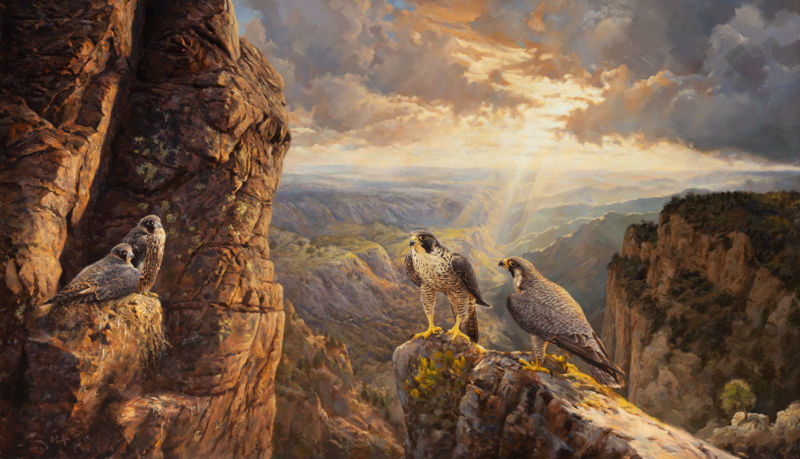
Peregrine Falcons of Monterrey from Artist Manuel Sosa
Colored Pencils
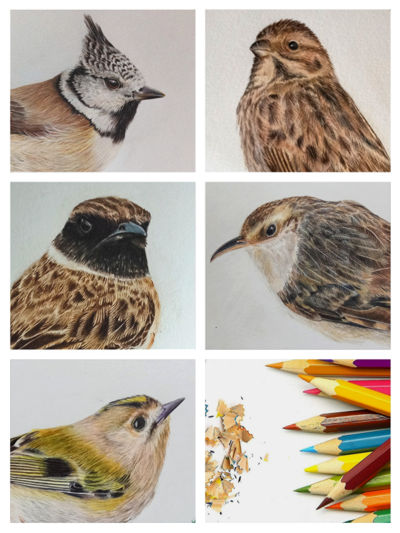
Wildlife artist Rena Chereti
Colored pencils are a versatile and accessible medium for bird illustration, offering control, precision, and a wide range of vibrant colors. This section will explore the tools and techniques involved in using colored pencils for bird art.
Why Are Colored Pencils Important in Bird Art?
Colored pencils are an excellent medium for bird illustration due to their ability to produce fine details and vibrant colors. They are portable, easy to use, and require minimal setup, making them ideal for both studio work and field sketching.
Example: The precise tips of colored pencils allow for detailed work on feathers and fine lines, while their broad sides can be used for shading and layering colors.
Technique Description
Using colored pencils involves layering and blending colors to achieve the desired effects. It requires patience and control to build up color and texture gradually.
Example: Start with light, broad strokes to establish the base colors and gradually add layers of color to create depth and texture. Use a blending tool or a lighter pencil to smooth transitions between colors.
Pencils Types
High-quality colored pencils are essential for achieving the best results. They come in two main types: wax-based and oil-based, each offering different characteristics.
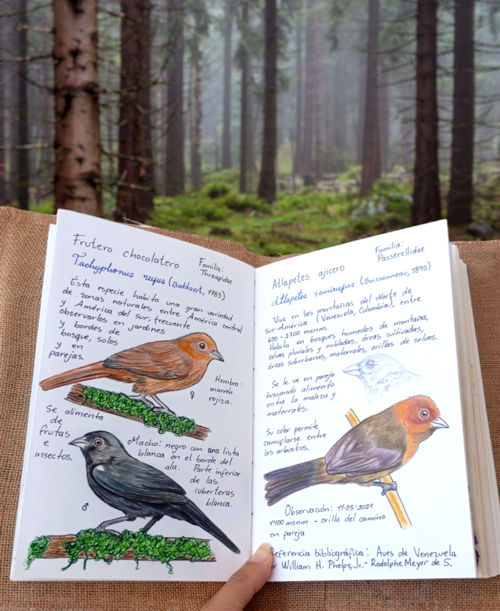
Naturalist artist Damaris Rojas
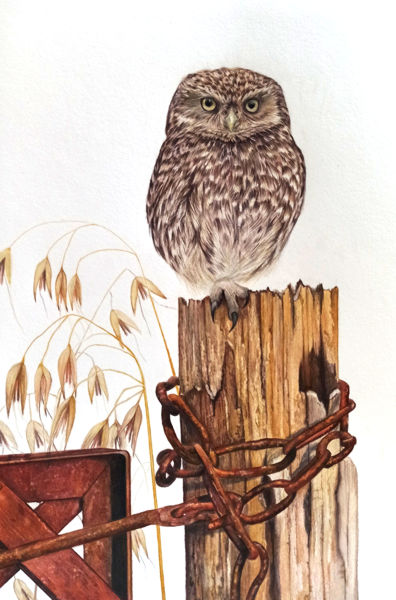
Wildlife artist Rena Chereti
Papers
The choice of paper can significantly impact the outcome of your colored pencil illustrations. The paper should have enough tooth (texture) to hold the pigment but be smooth enough for fine details.
Example: Bristol board or hot-pressed watercolor paper are excellent choices for colored pencil work. They offer a smooth surface that can handle multiple layers of color without wearing down.
In conclusion, colored pencils offer a unique and versatile medium for bird illustration, allowing for detailed and vibrant artwork.

Science Fact:
Not all birds can fly. Penguins, ostriches, and kiwis are examples of flightless birds.
Digital Illustration
Digital illustration offers tools and techniques that enhance creativity, precision, and efficiency. This section explores the tools and methods used in digital bird illustration, highlighting their advantages and applications.
Why is Digital Illustration Important in Bird Art?
Digital illustration provides a versatile and powerful medium for bird artists. It allows for easy corrections, experimentation with different styles and colors, and the ability to create high-quality, scalable images suitable for various applications.
Hardware
High-quality hardware is essential for effective digital illustration. This includes devices like graphic tablets, computers, and styluses that offer precision and control.
Graphic Tablets: Devices like Wacom tablets or iPads with Apple Pencils provide pressure sensitivity and fine control, mimicking the experience of drawing with traditional media.
Computers: A powerful computer with a good processor, ample RAM, and a high-resolution monitor is essential for running illustration software smoothly and handling large files.
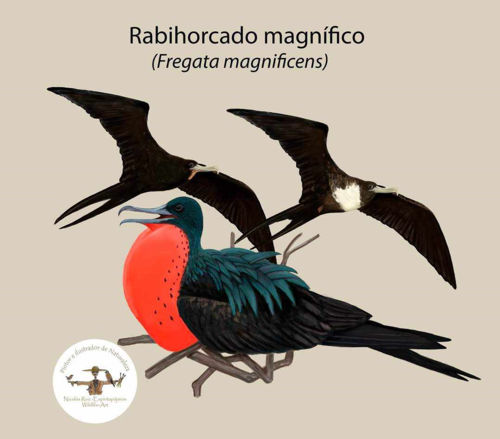
Art from Wildlife artist Nicolás Ruiz
Software
Digital illustration software offers a wide range of tools and features that enhance the artistic process. Popular programs include Adobe Photoshop, Corel Painter, and Procreate.
Techniques
Digital illustration techniques vary but often include layering, blending, and digital painting. These techniques help create depth, texture, and lifelike details.
Conclusion
Digital illustration is a good tool for bird artists, offering unparalleled flexibility, precision, and creative potential. By mastering digital hardware and software, and employing effective techniques, artists can produce stunning, lifelike bird illustrations suitable for a wide range of applications, from scientific publications to educational resources and art exhibitions.
CHAPTER 5
Techniques for Accurate Bird Drawing
and Planning Projects
STEP 1: Project Requirements
1. Determine the Goals and Requirements of the Project
Before starting any bird illustration project, it’s crucial to understand the specific goals and requirements.
Whether you're working for a scientific publication, a field guide, or a private client, clear communication about expectations is essential.

Scientific Illustrator Joris De Raedt
Example: If the project is for a scientific journal, the focus might be on anatomical accuracy and detailed labeling.
2. Establish Deadlines and Figure Out the Specifics of Every Single Deliverable
Setting clear deadlines and understanding each deliverable's specifics is vital for a smooth workflow. This includes knowing the size, format, and medium required for each piece.
Example: A client might need a series of illustrations in both digital and print formats, requiring high-resolution digital files and physical copies on specific types of paper.
STEP 2: Field Observations and Research
Observe Birds in Their Natural Settings
Field observations are fundamental to capturing the true essence of birds. When possible, watching birds in their natural habitats allows to see their behaviors, movements, and interactions, which are critical for creating lifelike illustrations.
Example: Observing a heron hunting in a wetland can provide insights into its posture, movement, and how it interacts with its environment, which can be invaluable for illustrations.
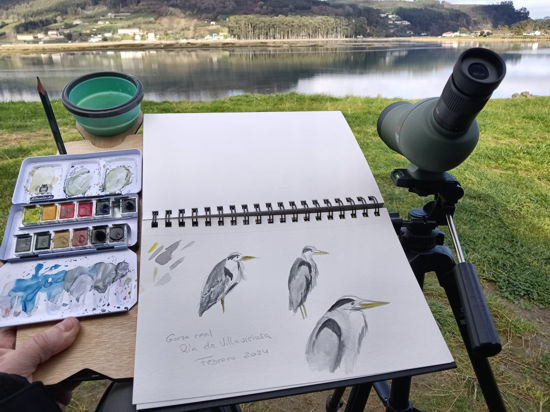
Naturalist Illustrator Jorge López

Study Client’s Information in Detail or Do Research
Thorough research is essential, especially when working on scientific illustrations. This might involve studying photographs, videos, and written descriptions provided by the client or conducting your own research.
Example: If illustrating a rare bird species, examining scientific papers, photographs, and videos can provide detailed information about its appearance and behavior.
STEP 3: Sketching Basics
Proportions and Shapes
Accurate proportions and shapes are the foundation of any good bird illustration. Understanding the basic shapes and sizes of different bird species helps in creating a realistic and proportional sketch.
Example: Using circles and ovals to block out the basic shapes of a bird’s body and head can help ensure accurate proportions from the start.

Scientific Illustrator Alpha Del Bosque
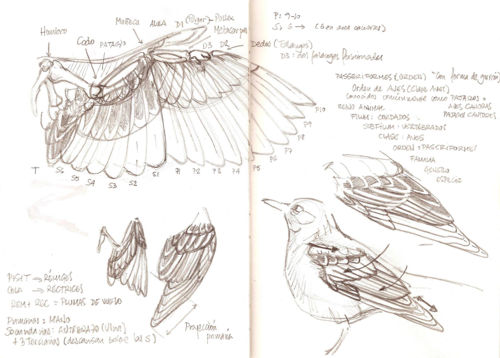
Artist Juan Carlos Gálvez
Detailing Feathers
Feathers are one of the most distinctive features of birds, and detailing them accurately is crucial. This involves understanding feather groups, their arrangement, and texture.
Example: Observing how primary, secondary, and tertiary feathers are layered on a bird’s wing can help in accurately depicting these details in your illustration.
Gesture Drawing
Gesture drawing involves capturing the overall movement and posture of a bird quickly. This technique helps in understanding the dynamic aspects of bird behavior and incorporating them into your illustrations.
Example: Quick sketches of a bird in various postures, such as flying, perching, or feeding, can help capture its dynamic nature.
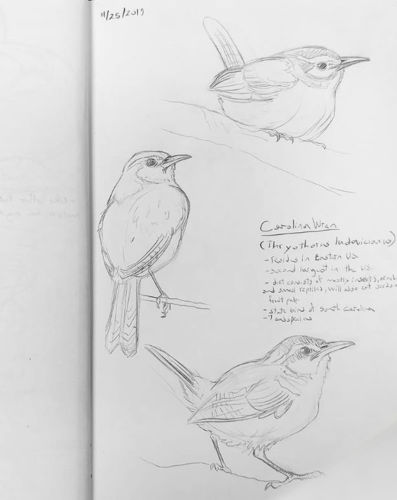
Artist Savannah Hoskinson sketch
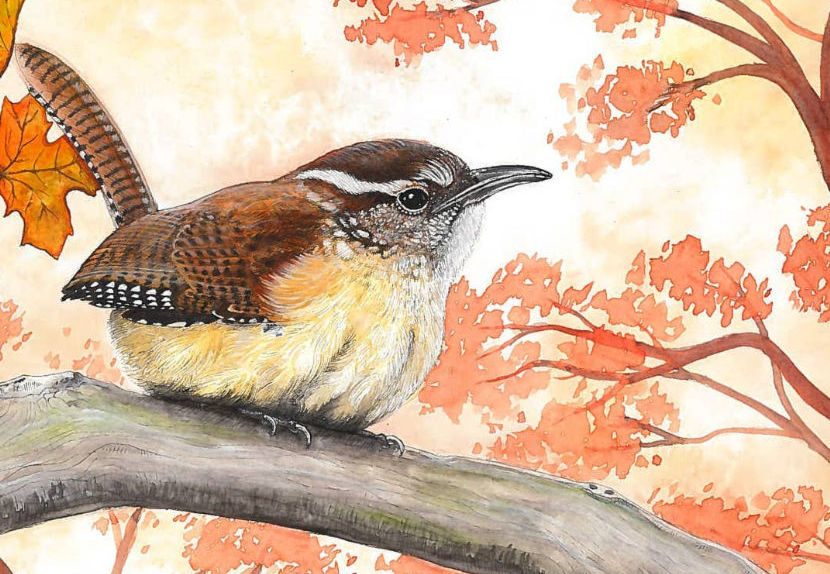
Artist Savannah Hoskinson final work
STEP4: Color Palette Selection
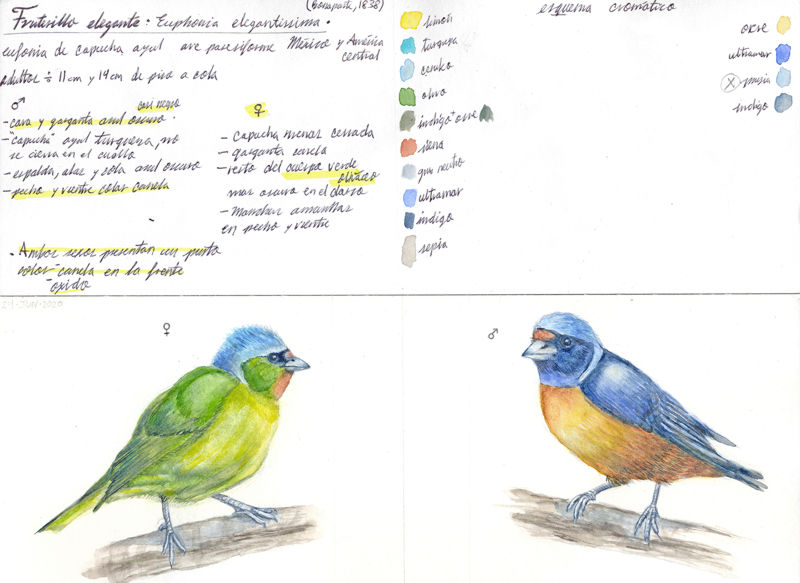
Artist Balamoc color studie
Choosing the right color palette is crucial for creating lifelike and engaging bird illustrations. This section will cover the principles and techniques for selecting and using colors effectively in bird art.
Creating Color Studies
Color studies are preliminary sketches that help test different color combinations and ensure they work well together before committing to the final illustration. You can appreciate a perfect example in Balamoc color studie above.
Example: Create small, quick sketches of the bird using different color palettes to see which combination best captures the desired effect.
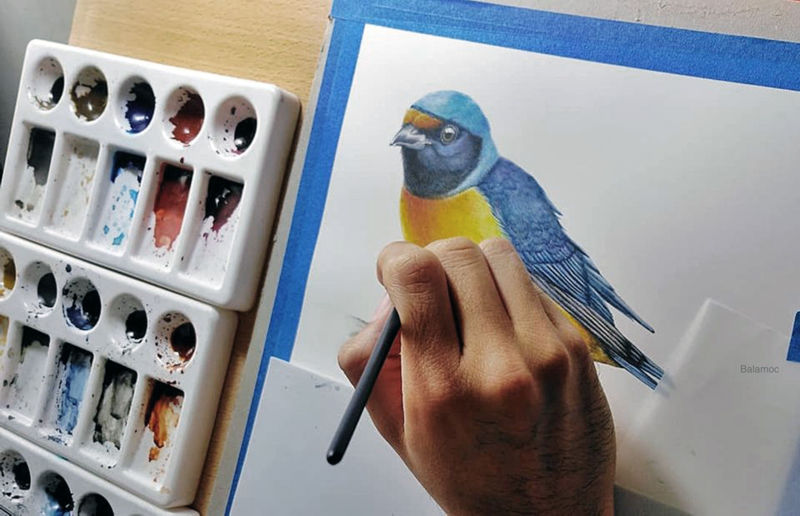
Artist Balamoc
Selecting a Color Palette
When selecting a color palette, consider the bird’s natural habitat, lighting conditions, and the overall mood you wish to convey.
Example: For a bird in a tropical setting, use vibrant, saturated colors to reflect the lush environment. For a winter scene, choose cooler, muted tones to convey the season’s atmosphere.
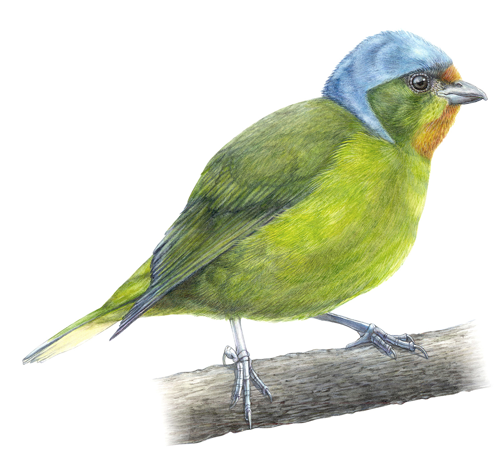
Illustration from Artist Balamoc
Using Reference Materials
Reference materials, such as photographs and field guides, are invaluable for accurate color selection. These resources provide a true-to-life representation of the bird’s colors in various lighting conditions.
Example: Studying high-resolution photographs of a blue jay in different lights can help determine the precise shades of blue and white to use.
Mixing Colors
For traditional mediums like watercolor and oil, mastering color mixing is essential. Understanding how to blend primary colors to achieve the desired hues can enhance the accuracy and depth of your illustration.
Example: Mixing ultramarine blue and cadmium yellow to achieve the perfect green for a parrot’s feathers, adjusting the ratio for light and shadow areas.
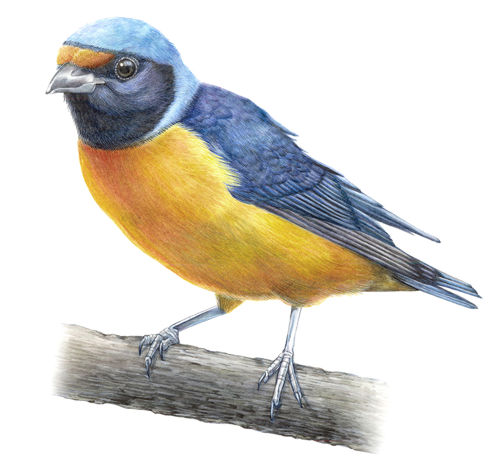
Illustration from Artist Balamoc
Digital Color Selection
Digital tools offer a wide range of options for selecting and experimenting with colors. Software like Adobe Photoshop or Procreate allows for precise color adjustments and easy palette testing.
Example: Using digital color pickers and palettes to experiment with different shades and tones, and adjusting them on the fly to achieve the perfect look.
Conclusion
By carefully selecting and utilizing the right color palette, bird illustrators can create vibrant, realistic, and captivating illustrations. Whether working with traditional or digital media, conducting color studies, and using reference materials are key to achieving stunning results.
STEP 5: Color
Adding color and depth involves using various techniques to make your illustrations more lifelike. This can include using multiple layers of color and varying the intensity to create depth.
1. Shading and Highlighting
Shading and highlighting are crucial for adding volume to your bird illustrations. They help define the form and structure of the bird, making it appear more lifelike.
Example: Shading the areas under the wings and belly, while highlighting the top of the head and wings, can give the bird a more three-dimensional appearance.
2. Layering Methods
Layering is essential for creating depth and texture in bird illustrations. Starting with broad shapes and gradually adding details and layers helps in building a realistic depiction.
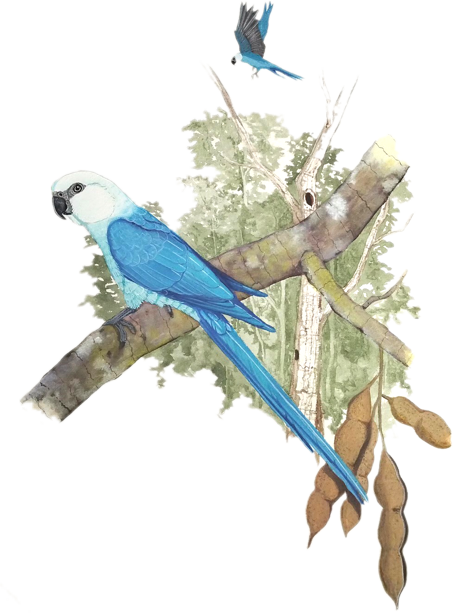
Flora and Fauna artist Raphael Dutra
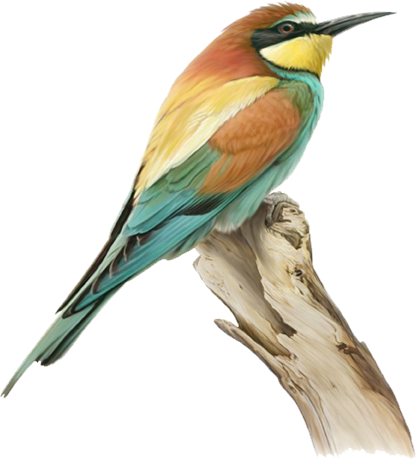
Artist Manuel Díaz Galeote
Blending Techniques
Blending techniques help in creating smooth transitions between colors and shades, adding to the realism to illustrations.
Example: Using a blending stump or soft brush to smooth out pencil or watercolor transitions can create a more polished and realistic look.
Mastering these techniques allow to create accurate and visually compelling bird illustrations. By understanding project requirements, conducting thorough field observations and research, and honing sketching and detailing skills, the illustrator can produce high-quality work that meets the needs of both scientific and artistic audiences.

Science Fact:
Birds have excellent vision. Most birds can see ultraviolet light, allowing them to perceive patterns invisible to humans.
CHAPTER 6
Practical Applications of Bird Illustration
Bridging the Gap Between Science and Public
Bird illustration is not just an artistic endeavor; it has numerous practical applications that bridge the gap between art, science, and education.
This section explores how bird illustrations are used in various fields to inform, educate, and inspire.
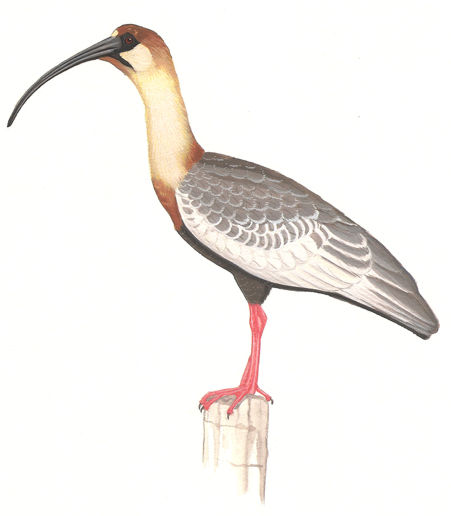
Flora and Fauna artist Raphael Dutra
Educational Resources
Bird illustrations play a crucial role in educational resources, particularly textbooks and field guides. These illustrations help students and bird enthusiasts accurately identify different species and understand their characteristics.
Textbooks
In biology and ornithology textbooks, detailed bird illustrations provide visual aids that complement the written content. They help students grasp complex concepts about bird anatomy, behavior, and evolution.
Example: A biology textbook might include diagrams of bird skeletal structures, muscle anatomy, and feather types, all illustrated to enhance understanding.

Field guide from artist Nicolás Ruíz
Field Guides
Field guides rely heavily on accurate and detailed bird illustrations to aid birdwatchers in identifying species in the wild. These guides often include life-like depictions of birds in various poses and plumages to cover seasonal and age-related variations.
Example: "The Sibley Guide to Birds" is renowned for its comprehensive and detailed illustrations, which help birdwatchers identify species across North America.
Scientific Publications
Scientific publications often require precise and accurate illustrations to communicate research findings effectively. Bird illustrations in these contexts serve to highlight specific features, behaviors, or anatomical details that are crucial to the study.
Journals
Ornithological journals frequently include bird illustrations to accompany articles on new species, behavioral studies, and ecological research.
These illustrations must be scientifically accurate to ensure the integrity of the research.
Example: A research paper on the nesting habits of a rare bird species might include detailed illustrations of the nests, eggs, and adult birds to provide a comprehensive visual context.
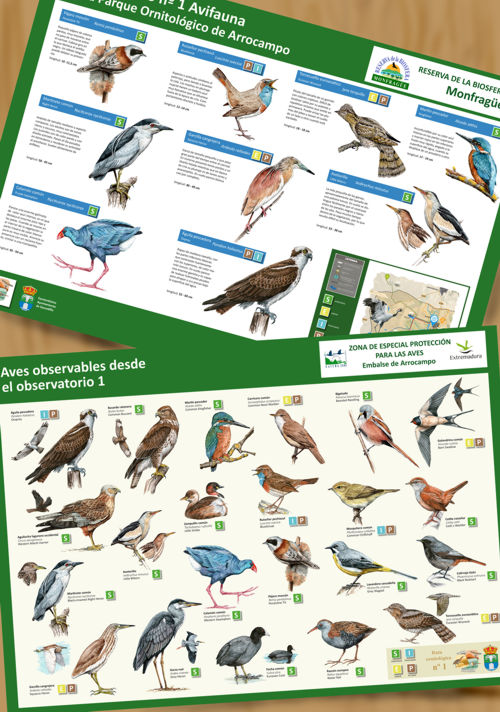
Scientific illustrator Nacho Sevilla
Research Papers
In-depth studies on bird anatomy, physiology, or phylogeny often require illustrations that depict internal structures, such as bones or muscles, as well as external features like plumage patterns.
Example: An anatomical study might feature cross-sectional illustrations of a bird's wing, showing the arrangement of bones, muscles, and feathers.
Art Exhibitions
Bird illustrations also have a prominent place in the art world, featured in museums and galleries where they can be appreciated for their beauty and artistry as well as their scientific value.
Museums
Natural history museums often include bird illustrations in their exhibits to educate the public about avian diversity, evolution, and conservation. These illustrations can be part of dioramas, informational panels, or interactive displays.
Example: The American Museum of Natural History in New York City features numerous bird illustrations in its ornithology exhibits, helping visitors learn about different species and their habitats.

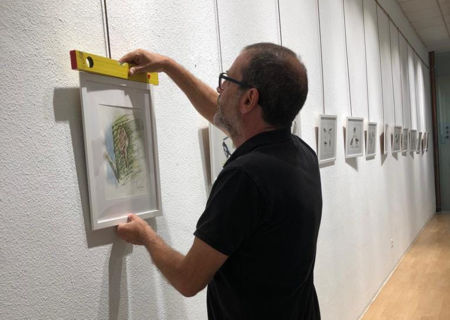
Artist Jorge López Iglesias exhibition
Galleries
Art galleries showcase bird illustrations as fine art, highlighting the skill and creativity of the illustrators. These exhibitions can inspire a deeper appreciation for birds and the natural world.
Example bellow: An exhibition of John James Audubon's "The Birds of America" prints can draw art lovers and bird enthusiasts alike, showcasing the intersection of scientific illustration and artistic mastery.
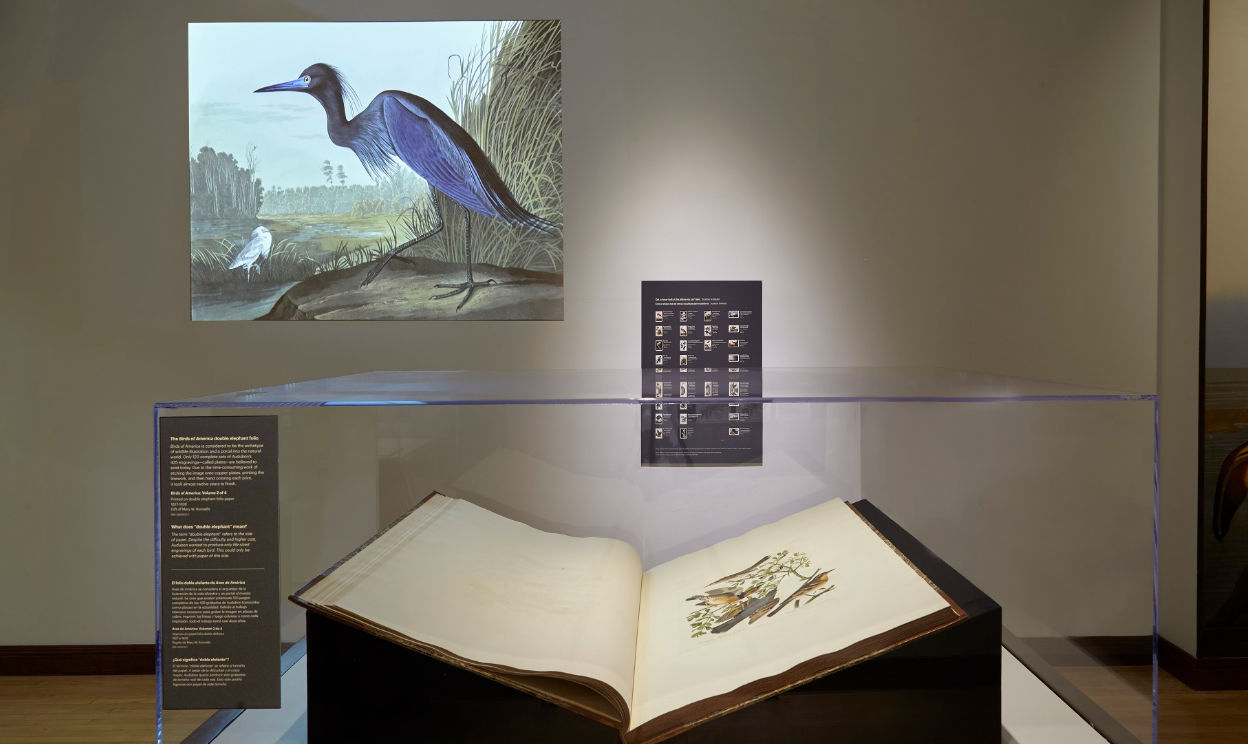
John James Audubon's exhibition

Science Fact:
The Arctic tern has the longest migration. It travels around 70,000 kilometers annually, from the Arctic to the Antarctic and back.
MORE
ARTICLES
Thank you for taking the time to explore the world of bird illustration with us. We hope this guide has provided you with valuable insights and inspired you to pursue your passion for illustrating these magnificent creatures.
If you enjoyed this article, please consider bookmarking our site for more informative and engaging content. Don’t forget to share it with fellow bird enthusiasts and aspiring illustrators.
If you want to learn more about scientific illustration, click on the button below.
Copyright ©2024 The Scientific Illustrator | All Rights Reserved
Privacy Policy | Terms & Disclaimers | DMCA